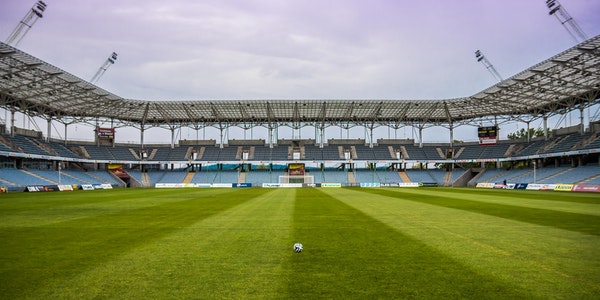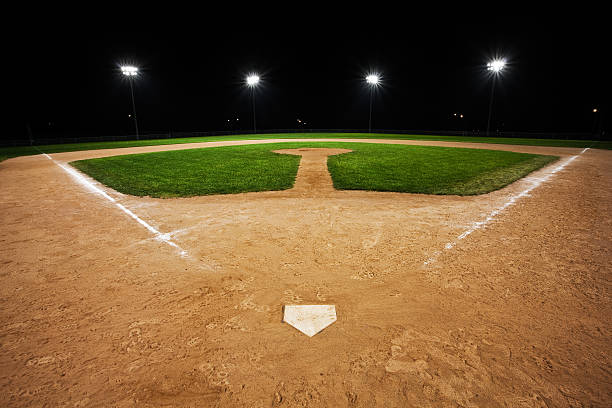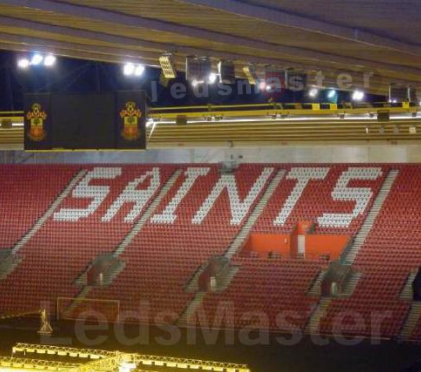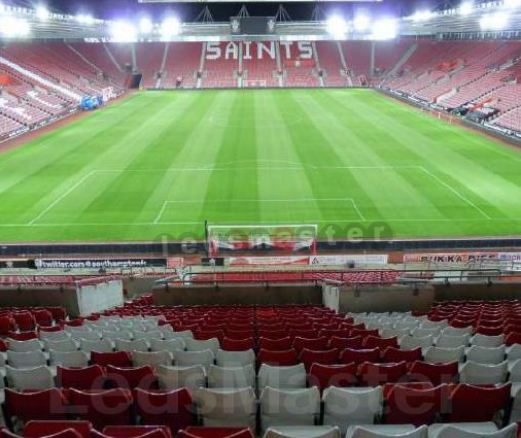(4) Instantaneous Adjustments: LED lighting systems respond instantaneously to adjustments, allowing venues to quickly adapt to changing environmental conditions or event requirements. Whether it’s adjusting brightness levels, changing color temperatures, or programming dynamic lighting effects, LEDs offer real-time flexibility to meet the needs of sports facilities and organizers.
(5) Dynamic Lighting Effects: LED lighting technology enables the creation of dynamic lighting effects, enhancing the visual appeal and excitement of outdoor sporting events. From color-changing effects to synchronized light shows, LEDs can transform the atmosphere of a venue and create memorable experiences for spectators.
(6) Remote Control and Automation: Many LED lighting systems are equipped with remote control and automation capabilities, allowing venues to schedule lighting presets, program dynamic sequences, and monitor energy usage from a centralized control interface. This automation streamlines operations, reduces manual intervention, and maximizes efficiency for sports facilities.
Overall, the customizability and flexibility of LED lighting technology empower outdoor sporting events to create immersive and engaging experiences for athletes, spectators, and organizers alike. By harnessing the full potential of LED technology, venues can optimize visibility, enhance safety, and elevate the overall atmosphere of their events.
C. Enhanced visibility and spectator experience
Enhanced visibility and spectator experience are significant benefits of LED lighting technology in outdoor sporting events:
- Uniform Illumination: LED lighting fixtures provide uniform illumination across the playing field, ensuring consistent visibility for athletes and spectators regardless of their location within the venue. This uniformity reduces shadows, glare, and dark spots, enhancing the overall viewing experience and improving safety for players.
- High Color Rendering Index (CRI): LEDs offer high color rendering capabilities, accurately reproducing colors and details on the playing surface. This high CRI enhances the visual clarity of outdoor sporting events, allowing spectators to see the action more clearly and appreciate the nuances of the game.
- Flicker-Free Operation: LED lighting systems operate without flicker, providing stable and flicker-free illumination even at high refresh rates. This flicker-free operation reduces eye strain and fatigue among spectators, enhancing comfort and enjoyment during extended periods of viewing.
- Dynamic Lighting Effects: LED technology enables the creation of dynamic lighting effects that enhance the atmosphere and excitement of outdoor sporting events. From pre-game light shows to synchronized color changes during key moments of the game, dynamic lighting effects captivate spectators and create memorable experiences.
- Enhanced Visibility in Challenging Conditions: LED lighting technology offers superior performance in challenging weather conditions such as rain, fog, or snow. LEDs produce crisp and clear illumination even in adverse weather, ensuring uninterrupted visibility for athletes and spectators alike.
- Spectator Engagement: LED lighting systems can be integrated with interactive features such as synchronized displays, scoreboard enhancements, and fan engagement activities. These interactive elements enhance spectator engagement, fostering a sense of community and excitement among fans attending outdoor sporting events.
- Nighttime Visibility: LEDs are well-suited for nighttime events, providing bright and vibrant illumination that allows outdoor sporting events to extend into the evening hours. The superior visibility offered by LED lighting enables nighttime games and activities, expanding opportunities for sports facilities to host events and attract larger audiences.
Overall, enhanced visibility and spectator experience are key advantages of LED lighting technology that contribute to the success and popularity of outdoor sporting events. By leveraging the capabilities of LED lighting, venues can create immersive and memorable experiences that delight fans and elevate the overall atmosphere of their events.
D. Environmental benefits
LED lighting technology offers several environmental benefits in outdoor sporting events:
- Energy Efficiency: LEDs are highly energy-efficient, consuming significantly less electricity than traditional lighting sources like incandescent or fluorescent bulbs. This reduced energy consumption helps lower greenhouse gas emissions and mitigates the environmental impact of outdoor sporting events.
- Reduced Carbon Footprint: The lower energy consumption of LED lighting translates to a reduced carbon footprint for sports facilities. By minimizing electricity usage and decreasing reliance on fossil fuels for power generation, LED technology contributes to lower carbon emissions and supports sustainability initiatives.
- Longevity and Durability: LED lighting fixtures have a much longer lifespan compared to traditional lighting sources, reducing the frequency of bulb replacements and associated waste generation. This longevity minimizes the environmental impact of manufacturing, transportation, and disposal of lighting products, contributing to resource conservation and waste reduction.
- Mercury-Free Operation: Unlike some traditional lighting sources such as fluorescent lamps, LEDs do not contain hazardous materials like mercury. This mercury-free operation eliminates the risk of environmental contamination and reduces the need for specialized disposal procedures, promoting environmental health and safety.
- Reduced Light Pollution: LED lighting technology allows for precise control over light direction and distribution, minimizing light spillage and reducing light pollution in surrounding areas. By directing illumination where it is needed most, LEDs help preserve natural habitats, protect nocturnal wildlife, and minimize disruption to ecosystems near sports facilities.
- Sustainable Practices: LED lighting technology aligns with sustainable practices and green building standards, contributing to the overall sustainability goals of sports facilities and organizations. By adopting energy-efficient and environmentally friendly lighting solutions, venues demonstrate their commitment to environmental stewardship and inspire others to follow suit.
- Government Incentives: Many governments offer incentives and rebates for transitioning to energy-efficient LED lighting systems. These incentives encourage sports facilities to invest in sustainable lighting upgrades, further promoting environmental benefits and supporting the transition to a low-carbon economy.
Overall, the environmental benefits of LED lighting technology make it an attractive choice for outdoor sporting events seeking to minimize their environmental footprint, reduce resource consumption, and promote sustainability. By embracing LED technology, sports facilities can enhance the environmental performance of their operations while providing optimal lighting for athletes, spectators, and the surrounding environment.
IV. Case Studies: Examples of LED Lighting Implementation
A. Major stadiums and arenas
LED lighting technology has been widely adopted in major stadiums and arenas around the world, transforming the way these venues illuminate sporting events. Some notable examples include:
- AT&T Stadium (Arlington, Texas, USA): Home to the Dallas Cowboys of the NFL, AT&T Stadium boasts one of the largest LED video displays in the world. The stadium features an innovative LED lighting system that enhances the fan experience with dynamic lighting effects and immersive visuals during games and events.
- Allianz Arena (Munich, Germany): The iconic Allianz Arena, home to FC Bayern Munich and TSV 1860 Munich, is renowned for its stunning exterior façade composed of inflated ETFE panels illuminated by thousands of LED lights. The stadium’s LED lighting system allows for customizable color changes, transforming the arena into a vibrant spectacle during matches and special events.
- Mercedes-Benz Stadium (Atlanta, Georgia, USA): As the home of the Atlanta Falcons (NFL) and Atlanta United FC (MLS), Mercedes-Benz Stadium features a cutting-edge LED lighting system designed to enhance the fan experience and optimize energy efficiency. The stadium’s unique retractable roof is also equipped with LED lighting, allowing for dynamic displays and immersive lighting effects.
- Saitama Super Arena (Saitama, Japan): One of the largest indoor arenas in the world, Saitama Super Arena is equipped with a state-of-the-art LED lighting system that provides customizable lighting solutions for a wide range of events, including concerts, sports competitions, and exhibitions. The arena’s LED displays and lighting effects create an immersive atmosphere for spectators and performers alike.
- Wembley Stadium (London, England): Wembley Stadium, known for hosting major sporting events and concerts, underwent a major renovation that included the installation of energy-efficient LED lighting throughout the venue. The stadium’s LED lighting system enhances visibility for players and spectators while reducing energy consumption and maintenance costs.
These examples demonstrate how LED lighting technology has revolutionized the lighting infrastructure of major stadiums and arenas, providing energy-efficient, customizable, and visually stunning illumination for sporting events and entertainment experiences. By embracing LED technology, these venues have enhanced the fan experience, reduced environmental impact, and set new standards for lighting design in the sports industry.
B. Local sports facilities and community events
LED lighting technology has also made a significant impact on local sports facilities and community events, providing numerous benefits to organizers, participants, and spectators. Here are some examples:
- Community Sports Complexes: Local sports complexes, including outdoor fields, courts, and recreational facilities, have increasingly transitioned to LED lighting systems. LED technology offers improved visibility, safety, and energy efficiency compared to traditional lighting methods. Community sports complexes benefit from reduced operating costs, enhanced playability during evening hours, and a more enjoyable experience for participants and spectators.
- School Stadiums and Gyms: Many schools and educational institutions have upgraded their stadium lighting and gymnasiums with LED fixtures. LED lighting enhances visibility for student athletes and spectators, enabling schools to host evening games, practices, and events. The energy efficiency of LED technology helps schools save on utility bills and allocate resources to other educational programs.
- Parks and Recreation Areas: Public parks and recreation areas often host community events, outdoor activities, and sports tournaments. LED lighting solutions improve safety and visibility in these outdoor spaces, allowing for extended hours of use and promoting active lifestyles within the community. Park administrators benefit from reduced maintenance costs and environmental benefits associated with LED technology.
- Community Events and Festivals: LED lighting has become a staple feature of community events and festivals, providing colorful illumination and dynamic effects. LED fixtures are used to decorate event venues, stage performances, and create immersive experiences for attendees. The flexibility and programmability of LED technology allow event organizers to customize lighting designs and themes to suit the occasion.
- Local Sports Leagues and Organizations: Amateur sports leagues and organizations at the local level benefit from the affordability and versatility of LED lighting solutions. LED fixtures can be installed in indoor and outdoor sports facilities, offering consistent lighting quality and customizable options for different sports and activities. Local sports leagues appreciate the cost savings and improved playing conditions provided by LED technology.
Overall, LED lighting technology has democratized access to high-quality lighting solutions for local sports facilities and community events. From neighborhood parks to school stadiums, LED fixtures enhance visibility, safety, and sustainability, contributing to the well-being and enjoyment of communities around the world.
C. International sporting events
- LED lighting technology has revolutionized the way international sporting events are illuminated, providing numerous advantages for organizers, athletes, broadcasters, and spectators. Here are some examples of how LED lighting has been utilized in major international sporting events:
(To Be Continued)






